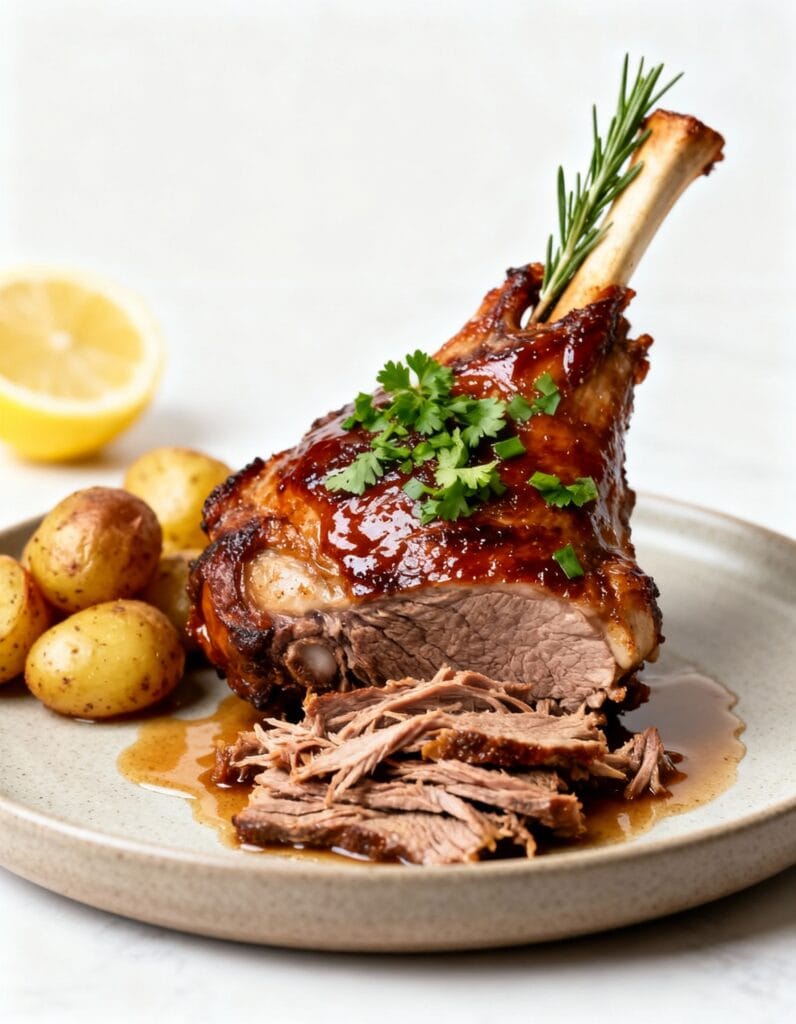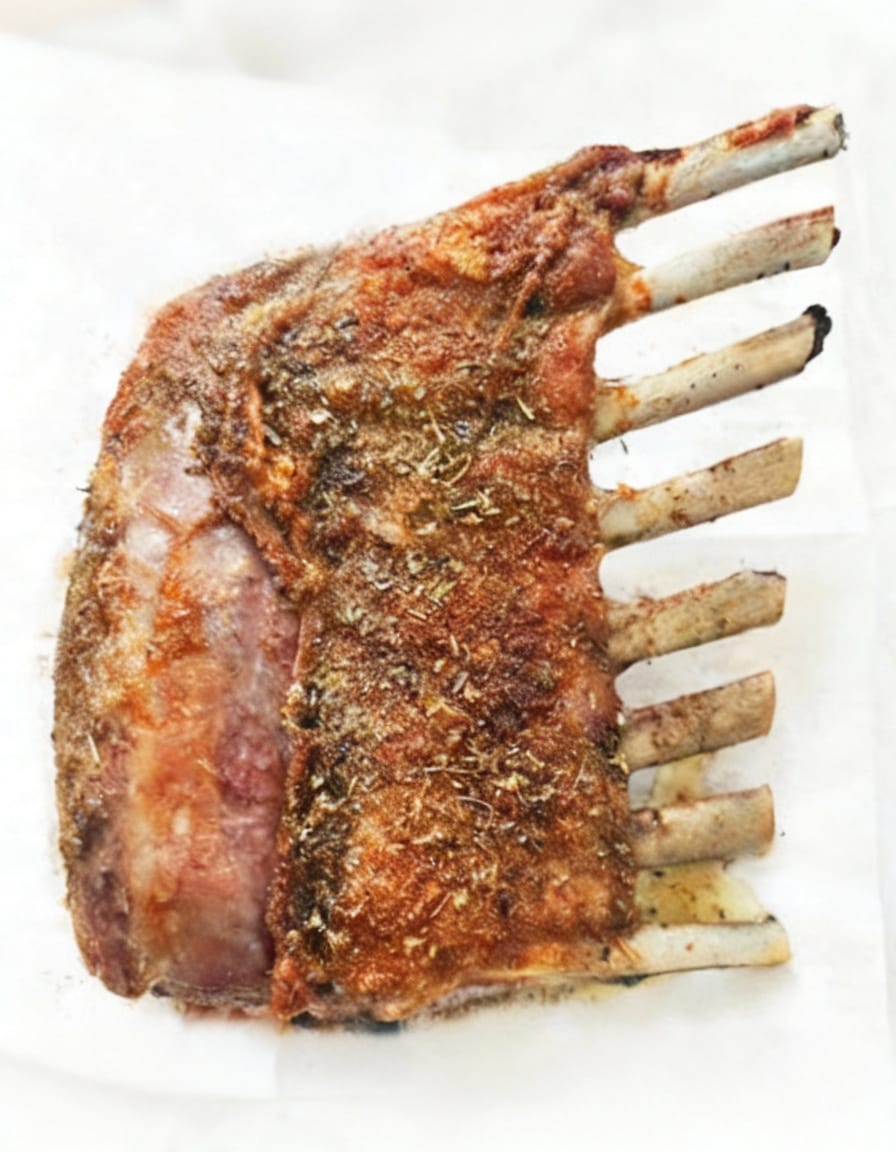Roasting a rack of lamb is a culinary skill that can impress guests and elevate any meal. With the right techniques and ingredients, anyone can achieve a flavorful and tender dish. This article will explore essential tips for selecting, preparing, and cooking a lamb rack. It will also cover ideal side dishes and kitchen tips to enhance the overall dining experience.
Choosing the Perfect Rack of Lamb

Selecting the right rack of lamb is crucial for achieving a delightful dish. When in the market, quality should be the top priority. Look for a rack that is well-trimmed, preferably ‘frenched,’ meaning that excess fat and sinew have been removed. This technique not only enhances the visual appeal but also promotes even cooking.
Freshness is another essential aspect to consider. The lamb should have a pinkish hue, indicating quality and youth. Avoid any that appear dark or discolored, as this can suggest less than optimal freshness. A good rack will typically contain around eight ribs, ensuring a sufficient portion for serving.
- Avoid racks with excessive fat: Too much fat can lead to greasiness.
- Choose local if possible: Locally sourced lamb often tastes fresher than imported options.
- Consider pasture-raised options: Lamb from pasture-raised animals is often more flavorful and ethically sourced.
Another point to keep in mind is the preparation method planned. If roasting, opt for smaller racks for quicker cooking times; larger racks require longer roasting and careful temperature management. A well-chosen rack of lamb sets the stage for a delicious meal and enhances the overall roasting experience.
Essential Ingredients for Roasting Lamb
The success of roasting lamb greatly depends on the quality of the ingredients used. Selecting the right elements can enhance the overall flavor and tenderness of the dish. Here are the key ingredients to consider:
- Garlic: Fresh, minced garlic adds depth and a savory aroma to the lamb. It complements the rich flavors of the meat beautifully.
- Herbs: Rosemary and thyme are classic choices. These herbs not only provide aromatic elements but also balance the richness of the lamb. Their fresh and earthy tones infuse the meat during roasting.
- Olive Oil: A high-quality olive oil is essential for both flavor and moisture. It helps the herbs and spices adhere to the surface, ensuring an even distribution of taste.
- Salt and Pepper: These fundamental seasonings are critical for enhancing the natural flavor of the lamb. Generously seasoning the meat will bring out its savory characteristics.
- Mustard: A layer of Dijon or whole grain mustard can create a flavorful crust when applied before roasting. It adds a slight tanginess that complements the lamb’s flavor profile.
- Acid: Incorporating a splash of balsamic vinegar or lemon juice can brighten the flavors and balance the richness. This acidity enhances the taste without overpowering the dish.
Selecting premium ingredients is a worthwhile investment. They not only improve the taste but also elevate the overall dining experience. Quality lamb will have a pink hue and a fresh appearance, indicating its freshness and tenderness.
Preparing the Lamb Rack Before Cooking
Preparation is a crucial step in ensuring a delicious roasted lamb rack. Begin by trimming any excess fat to enhance the overall flavor. A well-trimmed rack will not only present beautifully but will also allow the seasoning to penetrate deeply into the meat.
Next, consider the option of ‘frenched’ ribs. This technique involves removing the meat and fat from the ends of the rib bones, creating a cleaner look and making for an elegant presentation. It is best to ask the butcher for this preparation, ensuring it’s done correctly.
Marinating the lamb is another important aspect. A classic marinade consists of olive oil, minced garlic, fresh herbs, salt, and pepper. Marinating for at least one hour or, ideally, overnight allows the flavors to infuse the meat, making it more tender and flavorful.
- Use good-quality olive oil as a base.
- Add plenty of minced garlic for depth of flavor.
- Incorporate herbs like rosemary and thyme to complement the lamb’s richness.
- Ensure proper seasoning with salt and pepper, enhancing the natural taste.
Before roasting, take the marinated rack out of the refrigerator and allow it to come to room temperature. This step helps the lamb cook more evenly. Pat it dry with paper towels to ensure a good sear when placed in the oven. Properly preparing the lamb rack sets the foundation for an exceptional dining experience.
Roasting Techniques for a Juicy and Tender Rack
The key to achieving a perfectly roasted rack of lamb lies in the methods employed during cooking. One essential technique involves appropriately seasoning the meat before roasting. Generously sprinkle salt and freshly cracked black pepper on all sides to enhance its natural flavors.
Preheating the oven is crucial. Setting the temperature to 375°F (190°C) ensures even cooking and allows the meat to develop a beautiful crust. Proper placement in the oven is also vital. Position the rack bone-side down in a roasting pan to maximize exposure of the meat to the heat.
- Cook for 20-30 minutes, tailored to your desired doneness.
- A meat thermometer can provide accurate readings; target an internal temperature of 130°F to 140°F for medium.
- Consider broiling for the final few minutes to achieve a crispy surface.
Monitoring the cooking process helps to avoid overcooking. Lamb can dry out quickly if left in the oven for too long. Checking regularly ensures the meat remains juicy and flavorful. After roasting, it’s vital to allow the rack to rest. Covering it with foil for about 10 minutes will help redistribute the juices, further enhancing tenderness.
These roasting techniques focus on precision and attentiveness. By following them, the result will be a succulent rack of lamb that is tender and bursting with flavor.
Resting the Lamb and Final Touches
After roasting, allowing the lamb to rest is crucial for achieving optimal tenderness and flavor. This resting period enables the juices to redistribute throughout the meat, preventing them from spilling out when sliced. A minimum of 10 minutes is recommended, but resting for up to 20 minutes can enhance results even further.
Cover the rack loosely with aluminum foil to keep it warm while resting. This will help maintain the lamb’s temperature and moisture without creating steam, which can lead to a soggy exterior.
- Use a sharp knife to carve the lamb into individual chops.
- Slice between the bones to create clean, elegant portions.
- Arrange the chops on a serving platter for an appealing presentation.
Finishing touches can elevate the dish significantly. Consider drizzling a light sauce or glaze over the lamb just before serving, adding an extra layer of flavor. Popular choices include a mint sauce or a red wine reduction, which pairs beautifully with the richness of the lamb.
Garnishing the platter with fresh herbs, such as rosemary or thyme, can enhance the visual appeal and hint at the delicious flavors to come. Proper presentation not only highlights the dish but also adds a touch of sophistication to the meal.
What to Serve with Rack of Lamb
A well-cooked rack of lamb deserves delightful accompaniments to enhance the overall dining experience. Choosing the right side dishes can complement the rich flavors of the lamb while adding balance to the meal.
One classic option is roasted potatoes. Their crispy exterior and fluffy interior make them a perfect match, absorbing any juices from the lamb while adding a comforting texture. Consider seasoning them with herbs like rosemary or thyme for added flavor.
Another excellent choice is a medley of roasted vegetables. Options such as asparagus, Brussels sprouts, and carrots bring in vibrant colors and a slight sweetness that pairs beautifully with the savory lamb. These can be seasoned with olive oil, salt, and pepper for a simple yet effective enhancement.
Salads also provide a refreshing contrast to the richness of the lamb. A spinach salad topped with walnuts and a light vinaigrette can offer a crunchy texture and a tangy burst that balances the meal.
To elevate the meal further, consider serving sauces on the side. A mint sauce brings a fresh and zesty flavor that cuts through the meat’s richness. Alternatively, a red wine reduction or balsamic glaze can add depth and complexity, enhancing the lamb’s natural flavors.
- Roasted Potatoes
- Medley of Roasted Vegetables
- Spinach Salad with Walnuts
- Mint Sauce
- Red Wine Reduction
Kitchen Tips to Perfect Your Roasted Rack
Ensuring a successful roast involves various tips that can elevate the dish’s flavor and presentation. First, investing in a good quality meat thermometer is crucial. It allows for precise monitoring of the internal temperature, helping avoid overcooking and ensuring tenderness. The ideal temperature for medium doneness is between 130°F and 140°F (54°C to 60°C).
Another significant aspect is to let the rack of lamb come to room temperature before cooking. Allowing the meat to sit outside the refrigerator for about 30 minutes ensures even cooking throughout, which prevents the outside from cooking much faster than the inside.
Preparation of the roasting pan is also vital. Using a roasting rack inside the pan elevates the lamb, allowing hot air to circulate for even cooking. This setup helps achieve that perfect crust while keeping the juices intact.
Proper seasoning can enhance the final flavor. Applying salt and pepper generously before roasting allows the seasonings to penetrate the meat, creating depth in flavor. For added richness, a herb crust made from rosemary and thyme can be applied to the meat’s surface, which caramelizes beautifully in the oven.
- Allow the lamb to rest properly after roasting. Cover it with aluminum foil and let it sit for at least 10 minutes before slicing. This resting period helps redistribute the juices.
- Consider broiling the lamb for a couple of minutes at the end to achieve a beautifully golden-brown crust.
These simple yet effective kitchen tips can make a substantial difference in achieving a beautifully roasted rack of lamb.

